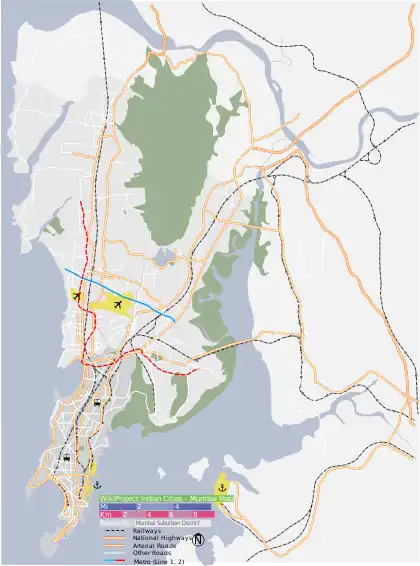| Gate of Mercy Synagogue Juni Masjid | |
|---|---|
 Picture of the Synagogue in Mumbai | |
| Religion | |
| Affiliation | Orthodox Judaism |
| District | Konkan |
| Rite | Sephardic |
| Ecclesiastical or organizational status | Active |
| Leadership | Samaji Hasaji Divekar |
| Year consecrated | 1796 |
| Location | |
| Location | 254, Samuel Street South Mumbai, Maharashtra |
 Location of Gate of Mercy synagogue in Mumbai | |
| Geographic coordinates | 18°57′08″N 72°50′11″E / 18.95226°N 72.836373°E |
| Architecture | |
| Completed | 1796 |
| Capacity | 300 |
The Gate of Mercy Synagogue (Marathi: दयेचे द्वार[1] / जुनी मशिद), Hebrew: שער הרחמים) (also known as Shaar Harahamim and Juni Masjid is the oldest synagogue in Mumbai, India.[2] The synagogue was built in 1796[3] by Samaji Hasaji Divekar (also known as Samuel Ezekiel), a Bene Israeli, near CSMT in South Mumbai. The synagogue was later rebuilt and moved to the present location at Mandvi in 1860.[4] In the eighteenth and nineteenth centuries, the area was inhabited by a small but thriving Jewish community.[5]
The local appellation of the synagogue, Juni Masjid, lends itself to the nearby Central railway station, Masjid Bunder.[6] Despite a fall in numbers, the synagogue still maintains active services such as a 6AM service. It serves a congregation of about a hundred members daily.[4] The synagogue is also featured on heritage and religious tours of the city.[3]
History
According to historical accounts, Samuel Divekar and his brother Issac, served in the British East Indian army as officers. During the Anglo-Mysore Wars, they were captured by the Mysore king Tipu Sultan. They were about to be condemned to death, when Tipu Sultan asked what caste they belonged to. The brothers mentioned that they were Bene Israel. Having never heard of the group, Tipu was about to condemn them to death, when his mother intervened, mentioning that she had heard of the name of the 'caste' in the Koran. Tipu, a devout Muslim spared the two brothers and later exchanged them for a prisoner swap with the British. The two brothers returned to the British enclave of Bombay (now renamed to Mumbai) and built the synagogue in thanksgiving.[5]
On 2 April 1919, the synagogue convened a public meeting of Bene Israeli on the subject of Zionism. Over 350 community members attended, and many were sympathetic to the cause of setting up of an independent homeland of Palestine though the debate sparked off deep debate on the subject.[7][6]
Structure
The structure can accommodate 300 members, and on High Holy Days it had large congregations attending. However, on Shabbat, not more than 50 attended services. There is also a mikvah (bath) present nearby for the religious to purify themselves.[5]
See also
References
- ↑ "Hidden history". dna. 12 September 2014. Retrieved 24 January 2019.
- ↑ Masih, Archana (11 September 2003). "For these Jews, Mumbai is the chosen land". The Rediff Special. Rediff.com. Retrieved 11 August 2008.
- 1 2 "Indian Synagogues". Jewish India. Retrieved 11 August 2008.
- 1 2 "Mumbai B Ward Plan". Department of Relief and Rehabilitation, Government of Maharashtra. Archived from the original on 8 September 2008. Retrieved 11 August 2008.
- 1 2 3 Goldstein, Israel (1984). My World as a Jew. Associated University Presses. ISBN 0-8453-4780-2.
- 1 2 Datta, Rangan (3 October 2020). "Inside the synagogues of Mumbai". Retrieved 21 January 2021.
- ↑ Rowland, Joan G. (1008). The Jewish Communities of India: Identity in a Colonial Era. Transaction Publishers. ISBN 0-7658-0439-5.